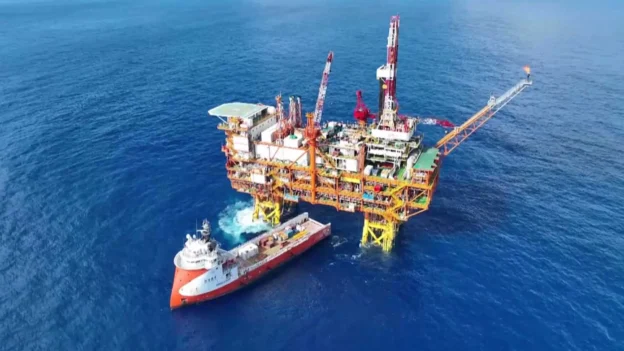CNOOC has confirmed a technical and environmental achievement with its offshore carbon dioxide storage project has passed the mark of 100 million cubic meters of CO₂ safely injected.
Enping Project 15-1 platform technology
The initiative focuses on the Enping 15-1 platform, located in the Pearl River mouth basin, about 200 kilometers from Shenzhen. Here, the CO₂ that accompanies crude oil is captured, treated and injected into subway geological formations, rather than being released into the atmosphere.
This approach, which fuses ecological protection and energy efficiency, offers a replicable path to a lower-carbon future for China’s offshore fields.
Xu Xiaohu, vice president of CNOOC’s Enping operating company.
This method improves oil recovery efficiency while ensuring the permanence of the gas in the deep seabed. Likewise, the modernization of the platform included the installation of CO₂ compressors and cooling systems to guarantee the quality of the injected gas.
Our method allows us to accurately target CO₂ to specific layers, even in a well less than 20 centimeters in diameter.
Wang Lin, production supervisor at the Enping 15-1 platform.
This project has operated safely for more than 15,000 hours, demonstrating its reliability. In addition, more than 550 million cubic meters of CO₂ are projected to be injected over the next decade, resulting in an increase in crude oil production of up to 200,000 tons.
With these results, the Enping 15-1 project establishes itself as a crucial benchmark in the achievement of China’s carbon targets and a practical example of how the CCS technology can optimize both energy production and environmental protection.
Source and photo: CGTN


